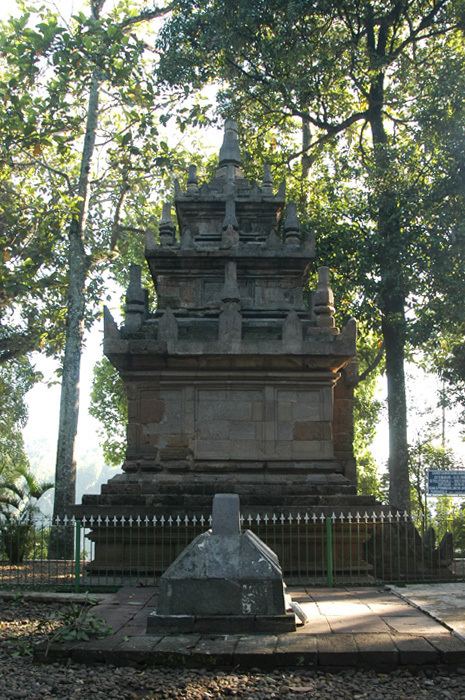Phone +62 813-1677-9909 | ||
 | ||
Similar Masjid Agung Manonjaya, Museum Galuh Pakuan, Situs Purbakala Cipari, Situ Bagendit, Prabu Geusan Ulun Mus | ||
Situ cangkuang by dians
Cangkuang (Indonesian: Candi Cangkuang) is a small 8th-century Shivaist candi (Hindu temple) located in Kampung Pulo village, Cangkuang, Kecamatan Leles, Garut Regency, West Java, Indonesia. The temple is one among the few Hindu-Buddhist temples ever discovered in West Javan region, other temples includes Batujaya and Bojongmenje temple.
Contents
Three meters to the south from the temple there is an ancient Islamic tomb of Embah Dalem Arief Muhammad, believed to be the community elders of Cangkuang village during the Islamization of local Sundanese people in 17th-century.
Location
The town of Leles is located around 40 kilometers southeast from Bandung on the way to Garut town. The temple is located several kilometers east from Leles-Garut main road. The temple occupy a 16.5 hectares island called Kampung Pulo ("island village") surrounded by a small lake (Sundanese: situ) called Situ Cangkuang. Near the temple there is a traditional Sundanese village. The temple, tomb, traditional village and the areas surrounding the island and lake, today is protected as cultural and archaeological sanctuary area. Originally the whole island was surrounded by this lake, however today only the northern parts were still flooded, the southern parts of the lake are reclaimed and turned into rice paddy. The temple's name cangkuang, was derived from Sundanese native name for pandan tree (pandanus furcatus) found grown around the temple in Kampung Pulo island.
Description
The temple was made from andesite stones, the temple's base measures 4.5 x 4.5 meters and 8.5 meters tall. The temples faces east, on the east side there is a flight of stairs leading to the portal and a small main room (garbhagriha). Inside the main room there is a small 62 cm tall stone statue of Shiva. The statue is damaged, the hands are broken and the face is quite eroded. On the pedestal of the statue there is a carving of Nandi's head. The temple is quite simple and unadorned with minimal ornaments. The roof is arranged in three receding steps adorned with pseudo-lingam pinnacles. The architectural style is similar to those of early Central Javanese Hindu temples. Judging from the stone decay degradation and the simple style of the temple, expert estimates that the temple is dated circa early 8th-century, around the same period of Dieng temples, and slightly older than temples of southern Central Java such as Prambanan.
